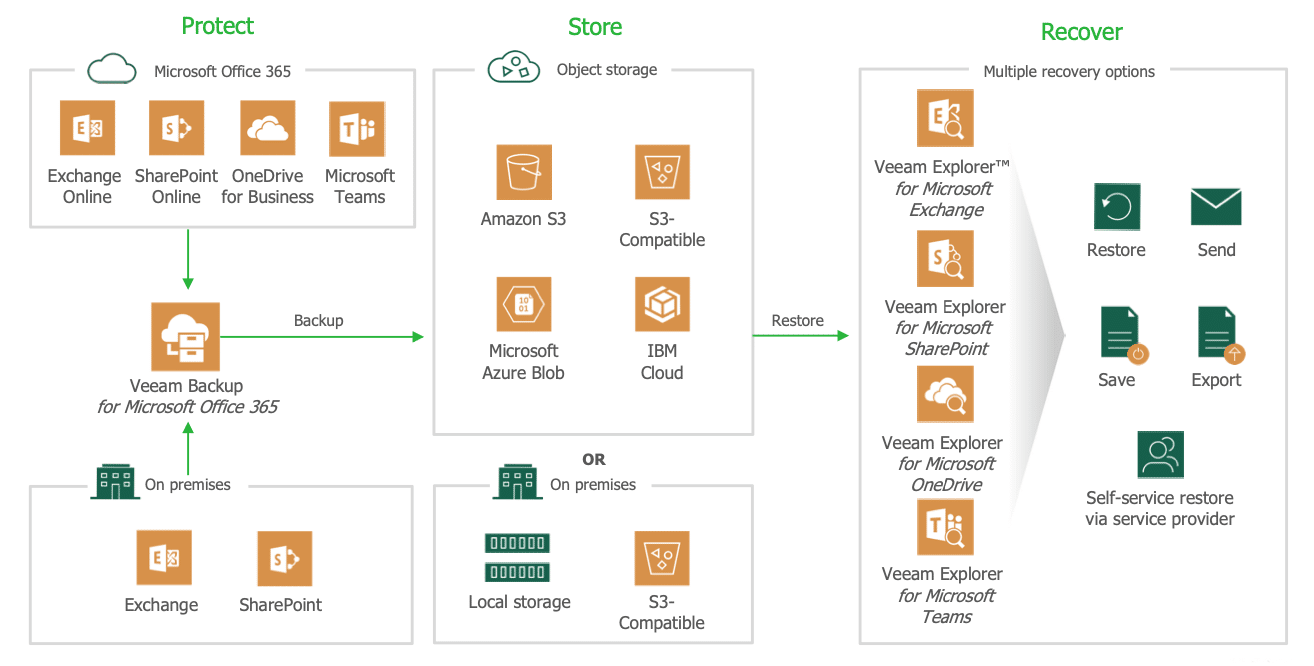Veeam Software announced the general availability of its Software as a Service (SaaS) product Veeam Backup for Microsoft 365 v6. This latest solution introduces the self-service restore portal and enhances cloud object storage integrations with backup copy to Amazon S3 Glacier, S3 Glacier Deep Archive, and Azure Archive. This enables users to securely backup to any location, including on-premises, in a hyperscale cloud, or with a service provider, resulting in more efficient backups and time savings for IT.
According to Veeam CTO and SVP of Product Strategy, Danny Allan:
“Veeam Backup for Microsoft 365 reported 73% growth YoY, with 8.5 million users relying on Veeam to protect their Microsoft 365 data, including Exchange Online, SharePoint Online, OneDrive for Business, and Microsoft Teams. Within all SaaS platforms, including Microsoft 365, the organization owns and controls their own data, and it’s the organization’s responsibility to protect it. The growth and momentum of Veeam Backup for Microsoft 365 is an indication that more organizations are realizing the importance of managing and securing their data, and consistently trust Veeam with critical business assets.”

According to a data protection report issued in February, 50 percent of backup and SaaS admins say accidental deletions is their top motivator for protecting Microsoft 365, citing time spent restoring user data as a pain point due to accidental deletions. With the introduction of the self-service restore portal, IT administrators can securely delegate restores of emails, files, and more from a single centralized location.
Backup to cloud services
According to ReportLinker, there are over 300 million commercial paid seats for Microsoft 365. With data generated at a rapid rate, and organizations storing more data due to retention policies, the demand to leverage low-cost object storage has become critical. To meet the demand for retaining growing electronic intellectual property, Veeam added backup copy to Amazon S3 Glacier, Glacier Deep Archive, and Azure Archive. These cloud services provide a secondary copy on low-cost, long-term object storage options for various retention periods. Veeam already supported AWS S3, Azure Blob, IBM Cloud, Wasabi, and other S3-compatible providers in previous releases.
The first version of Veeam Backup for Microsoft 365 was released in November 2016 and has continued to evolve to keep up with market demand.
NEW Veeam Backup for Microsoft 365 v6 provides:
- Automation and scalability for enterprise organizations and service providers
- Time savings in handling restores and not having to build and maintain your portal
- Enhanced security with multi-factor authentication (MFA) access to restore data
- Recovery confidence with a secondary copy of data in low-cost object storage
Veeam Backup for Microsoft 365 is designed for IT departments that use Microsoft 365 and Veeam Cloud & Service Provider (VCSP) partners wanting to offer Microsoft 365 backup services to their customers. Veeam Backup for Microsoft 365 v6 is now generally available. Veeam Backup for Microsoft 365 Community Edition provides FREE backup and recovery of Microsoft 365 data for up to 10 users, 10 teams, and one TB of SharePoint data.
For more information, visit www.veeam.com.




 Amazon
Amazon